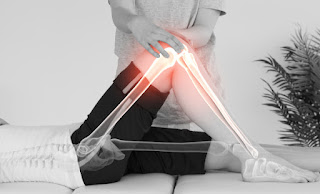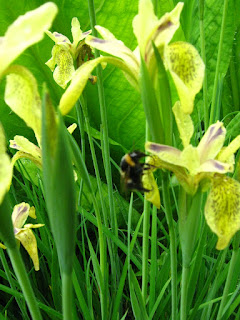Yoga and Breathing: Why they are a perfect combination
When you say you are going to practice yoga. By that very act, it means in effect you are going to practice yoga and breathing – you cannot do one without the other.
Of course you can’t do anything without breathing, you don’t need a doctor to tell you it’s end of life when you stop breathing, but the beauty of yoga and breathing is that you are learning how to become more and more aware of your breath and the amazing life force that is behind it.
Just think how much you do in life not being aware of your breath.
For you to give yourself one hour a day even one day a week where you commit to your yoga and therefore also to your breath is a great gift to your spirit, your health and your happiness.
In Kaiut Yoga you are taught a lot about freedom. About how to research and find restrictions in the body, and how to soften and release and let go of those tensions. Using your breath to help you do so.
In the ancient texts, the yoga sutras of Patanjali, pranayama (commonly translated as breathing techniques or yogic breathing) is presented as the 4th limb of Yoga.
In total, there are 8 limbs of yoga, all described in detail – and this 4th limb regarding the breath has been translated and taught here in the western world as a lot of very precise and formulaic breathing exercises.
If I take you back to the root of the word pranayama perhaps you’ll get a different understanding to yoga and breathing.
Pranayama contains two Sanskrit words: prāṇā which means life force or energy, energy of the universe and it could also be translated as spirit. And ayama means extension or expansion or breadth. So we could say that pranayama means extension of your lifeforce. Expansion of the spirit.
How do you extend your life force?
In Kaiut Yoga you are invited to explore the notion of aging in your practice. You are invited to confront all the aspects of your body, mind and spirit to find and inquire into the areas where you have become stuck, stagnant or unfree. That way you can apply your open awareness to those restricted areas and invite freedom.
Find flow.
Let go of any tightness or rigidity.
This in itself helps reverse the aging processes.
When you find a tightness in the body, if you use a light, free breath, along with your attention to place awareness into that tightness you will discover how to let it go. But if there is a tightness to your breath, then some of your focus will be occupied by that very tightness. A controlled or laboured breath will be activating the autonomic nervous system into its fight, fight or freeze mode.
In fight or flight, your body is concerned about survival - are you able to breath in this situation? Is this lack of oxygen life threatening? Any notion of you having a relaxing and restorative yoga practice in that moment is lost.
Have you ever been in a situation where you are trying to do something very carefully and you notice that in order to get it “right” you hold your breath?
Have you ever been in a situation where you are angry, upset or irritated and did you notice the change in your breath?
When there is a change in your breath that makes it tighter (for whatever reason) you are creating restriction.
With the correct combination of yoga and breathing any tightness can be released.
Imagine you are on your mat. Doing your practice. If you are trying too hard, if you are forcing yourself to hold your leg up, or get your arm into a certain place, or push beyond a restriction, or make a move that is too much, then your automatic response, your parasympathetic autonomic nervous system will kick in, signalling tension and you might find yourself unconsciously holding or forcing and labouring the breath.
BREATHE I say to you in class.
I tell you not to try and fix your breath, there is no right or wrong to the breath, but if you are holding it, naturally there will be pressure. And pressure creates tension. So just notice if you find yourself on your mat, with a tight and controlled breath, and a tight and controlled practice that is contrary to the intention of being free and relaxed. Your holding of your breath often comes as a consequence of putting too much effort into your practice.
Notice how you are breathing. That gives you immediate feedback to how you are approaching your practice.
Some yoga and breathing exercises as many teachers present them (indeed as I used to teach them) have prescribed breathing sequences and counts and precise areas of the body to move to support the breath. Could it be that those very breathing exercises might be creating stress or pressure that actually depletes your life force?
I don’t know.
What I do know is that most of my students, most of you reading this blog, will have inherent tightness and rigidity around the lungs, the ribcage and the spine. That's just part of being human, and conditioned by our western lifestyle. If you try doing your Yoga practice with some strong prescribed breathing exercises, you will be forcing air into a system that is not supple enough, not expansive enough and with that extra air being forced in will be activating the stress response in the body.
So take off the pressure. Breath lightly and freely. Get on your mat and notice what happens to the breath in all the different postures you do. That’s when yoga and breathing is a beautiful combination.
Find low pressure situations in your Yoga practice and breathing thereby increase your life force. You won’t want to force or explode with air pressure, but rather be gentle in your approach to the breath.
Alongside my Kaiut practice, I’ve been very influenced by the teaching of Vanada Scaravelli, and have worked with several teachers over the years who continue her legacy. Scaravelli over and over again taught that we need to look for freedom in our practice.
That is why yoga and breathing are a perfect combination. The immediacy of your breath gives constant feedback about the approach you are taking in your practice when you get on your mat.
If you are doing yoga and you discover that there is no freedom to your breath, your job in that moment is to release the tightness and constriction, to stop the force and pressure. The breath will tell you immediately when you have done that.
You will sigh.
You will relax and release.
You will have found freedom.
For more information about Breathing and Yoga - Classes online (via zoom), membership site (recordings of classes and instructional videos) and to gain access to three free yoga videos please visit www.kathywhiteyoga.com





Comments
Post a Comment